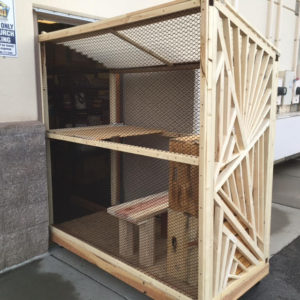As the cannabis industry expands, interest in hemp and marijuana’s health benefits for pets has grown. The cannabis plant is cultivated for both hemp and marijuana harvests and hemp is already a popular material in dog toys, beds and collars. Now even more people are using CBD supplements to improve their pets’ health and well being.
Good to know: CBD vs. THC
CBD (cannabidiol) is derived from marijuana or hemp plants and is touted for its therapeutic effects.
THC (tetrahydrocannabinol) comes solely from marijuana plants and is known for its psychoactive properties.
The CBD used in the supplements and treats we carry at The Happy Beast is extracted from cannabis plants grown to produce hemp and contains less than .3% THC (the psychoactive chemical found in marijuana.) This means: 1) You and your pets will not get “high” from ingesting CBD, and 2) CBD is legal to purchase and possess in all 50 states.
How it works:
All mammals, including dogs, cats, and people have a endocannabinoid system composed of receptors in the brain called CB1s and other receptors in the body called CB2s. Our bodies produce endocannabinoids that bind to these receptors to maintain homeostasis, which means the body stays in balance regardless of environmental changes. A good example of this is how our body temperature stays around 98 degrees even when it’s very hot or very cold in our environment.
Homeostasis becomes more interesting when the body experiences a disruption or injury. We know that pain and inflammation are important in healing, pain lets us know that something is wrong and inflammation initially occurs to protect the body. CBD goes to work on immune and nerve cells to regulate pain and inflammation.
Why supplement with a CBD oil when our bodies already produce endocannabinoids?
First, endocannabinoids are produced by our bodies (“endo” meaning “within”) whereas phytocannabinoids come from the cannabis plant (“phyto” meaning “plant).
New studies show that supplementing with a small daily dose of phytocannabinoids increases the number of CB1 and CB2 receptors which augments the function of the entire system. Some scientists propose that deficiencies in our modern diets decrease the body’s ability to produce a sufficient supply to the point that supplementation becomes necessary.
How to try it:
If you have a healthy dog, PetReleaf treats are perfect for a small daily dose to create balance in the endocannabinoid system.
If your dog or cat is suffering from anxiety, pain, cancer, arthritis, or an otherwise compromised immune system, PetReleaf oil and CannaCompanion capsules provide a concentrated, higher dose of CBD. While CBD has shown no contraindications with other medications or serious side effects, if your animal is under vet care make sure your vet knows you are using it.
And finally, if you’d like more information, just stop by The Happy Beast in Lafayette and we’ll walk you through the various options and benefits.
P.S. Marijuana is STILL not safe for our pets. THC is not the same as CBD, and animals can have adverse reactions to THC, so keep it out of paws reach!

 *Remember that while some cats absolutely love getting out and about, for other cats, especially those that are skittish, it might not be the best expression of their energy. For these kitties, a cat enclosure may be the safest way for them to interact with their natural environment.
*Remember that while some cats absolutely love getting out and about, for other cats, especially those that are skittish, it might not be the best expression of their energy. For these kitties, a cat enclosure may be the safest way for them to interact with their natural environment.